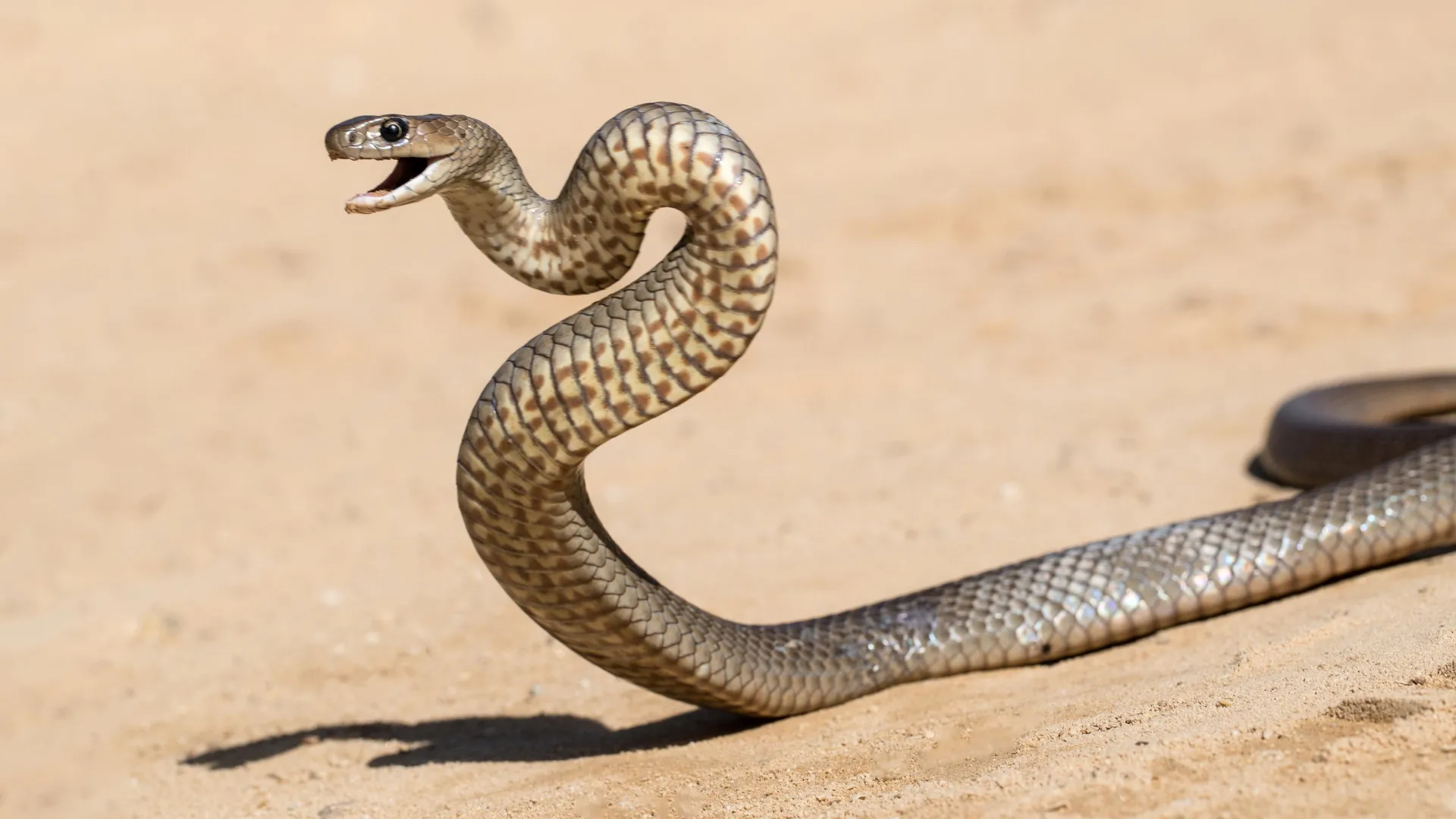Hidden venom divide in Australia’s deadliest snake raises urgent treatment questions
- Date:
- August 22, 2025
- Source:
- University of Queensland
- Summary:
- Scientists have uncovered a startling split in the venom of Australia’s Eastern Brown Snake. In the south, bites cause rock-solid blood clots, while in the north, they trigger flimsy clots that collapse almost instantly. This hidden divide means current antivenoms, made from pooled venom of uncertain origin, may not work equally well across the country.
- Share:

A University of Queensland study suggests the antivenom given to people bitten by Eastern Brown Snakes may not be as effective as it could be, prompting a review of hospital cases.
Professor Bryan Fry from UQ's School of the Environment led a team which assessed the blood-clotting toxins in venoms from every Australian brown snake species.
"We discovered not all brown-snake venoms are the same - meaning that lifesaving antivenom may need an urgent upgrade," Professor Fry said.
"Some venoms formed a rock-solid clot in blood, while others spun up a rapid but flimsy web of clots that shredded almost instantly.
"Both venoms can kill but they do it in completely different ways."
The team used a process called thromboelastography, which assesses blood coagulation, and showed Eastern Brown Snakes (Pseudonaja textilis) from southern Australia have a 'taipan-like' venom that builds a strong, stable blood clot.
Venom from northern populations of Eastern Brown Snake, as well as all other brown snake species, triggered fragile blood clots, but lightning fast.
"Our data shows the effect on blood of an Eastern Brown Snake bite in northern areas and a bite in southern Australia are chalk and cheese," Professor Fry said.
"Currently Australia's brown-snake antivenom is produced using a pool of venom of unstated geographic origin.
"If it doesn't have both northern and southern Eastern Brown Snake venom, coverage could be patchy and the antivenom efficacy could vary widely.
"Clinical reports have all brown snake bite cases together regardless of species or location so any differences for the southern population versus all other brown snakes could be obscured.
"Our next step is to go back through hundreds of hospital charts to ascertain if there is a difference, which we can do because the southern strong-clot lineage lives where no other brown snake occurs.
"We can re-code every reported bite by geography and tease apart the clotting patterns between the strong and weak clotting types of brown snakes.
"We will also urgently test the available human and veterinary antivenoms to see if the differences in venom biochemistry are mirrored by variations in antivenom efficacy.
"While existing antivenoms have saved lives, with new information we can move to precision toxicology, matching the right antivenom to the right snake, and ultimately, to the right patient."
Professor Fry's team is also sequencing the venom genes to pinpoint the mutations responsible for the differences in northern and southern Eastern Brown Snakes.
"We showed the geographic difference in venom effect overlays with a genetic divide within the Eastern Brown Snake," he said.
"Our research demonstrates how diet steers venom evolution, because the southern populations consume more reptiles than the northern populations which eat more mammals.
"By appreciating both the evolutionary fine-tuning and the clinical outcomes of these venoms we can better tailor our medical responses."
The research paper has been published in Toxins.
Story Source:
Materials provided by University of Queensland. Note: Content may be edited for style and length.
Journal Reference:
- Holly Morecroft, Christina N. Zdenek, Abhinandan Chowdhury, Nathan Dunstan, Chris Hay, Bryan G. Fry. X Marks the Clot: Evolutionary and Clinical Implications of Divergences in Procoagulant Australian Elapid Snake Venoms. Toxins, 2025; 17 (8): 417 DOI: 10.3390/toxins17080417
Cite This Page: